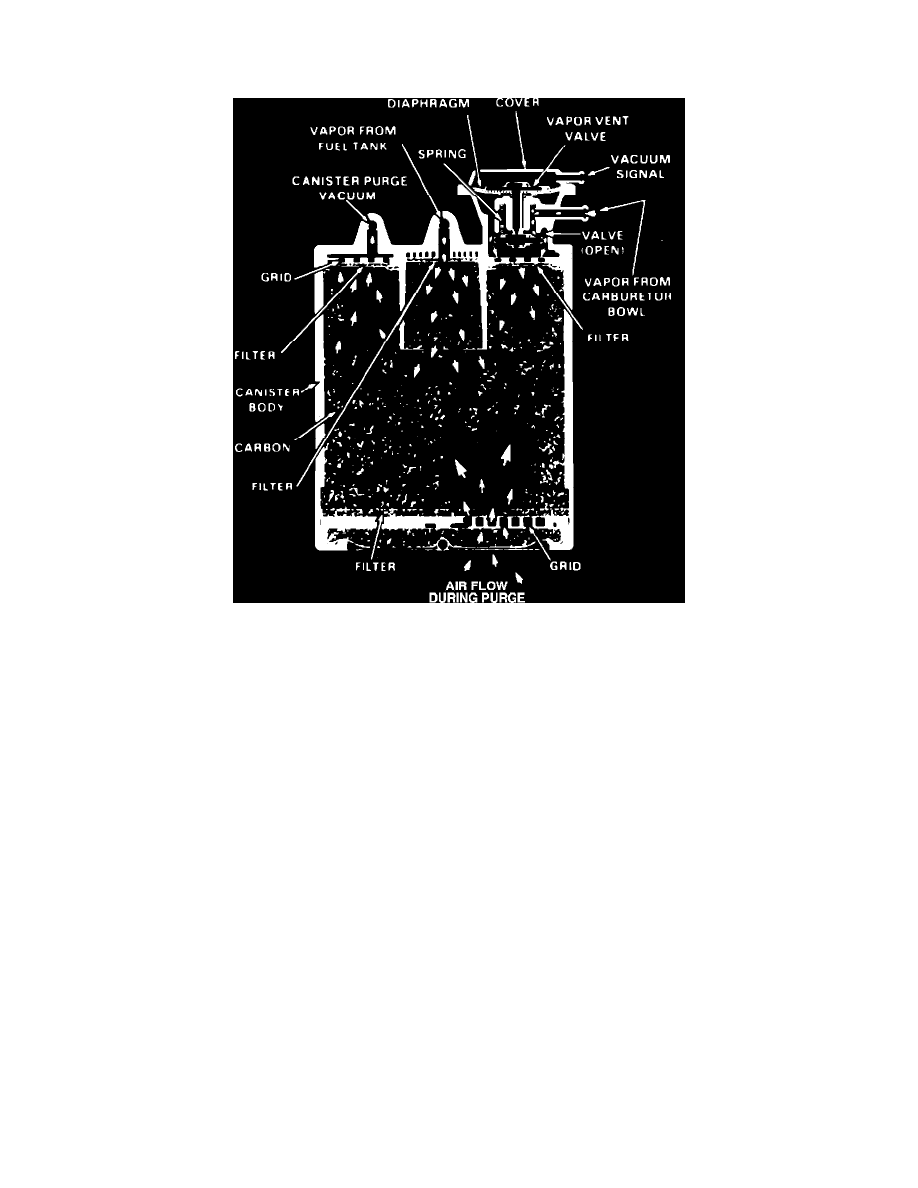Suburban 3/4 Ton 2WD V8-454 7.4L (1985)

Evaporative Emission Control Canister: Description and Operation
Vent Valve Type Vapor Canister
Fig. 64 Vent valve type canister
This canister, Fig. 64, has a vent valve system which is an integral part of the canister assembly. The canister collects fuel vapors from the carburetor
float bowl through a hose to the vent valve. The vent valve assembly consists of a housing and tube molded into the canister cover, vent valve, valve
spring, diaphragm, and diaphragm cover with integral vacuum signal line.
When the engine is off, no manifold vacuum is available to the vent valve diaphragm, thereby enabling the valve spring to keep the valve open. At this
point, fuel vapors in the carburetor float bowl are pressurized and then directed from a tube in the float bowl, through a connecting hose, to the ``Car
Bowl'' tube in the canister cover. The vapors then flow past the open vent valve through the upper canister filter and into the charcoal bed, where they are
stored until normal purging of the canister occurs.
When the engine is running, manifold vacuum is applied to the vent valve diaphragm through the signal tube marked ``Man. Vac.'' At this point, the
vent valve closes against spring tension and seals the passage venting fuel vapors from the float bowl to the canister.
When the engine is stopped, the spring opens the valve to again allow venting of the float bowl.
